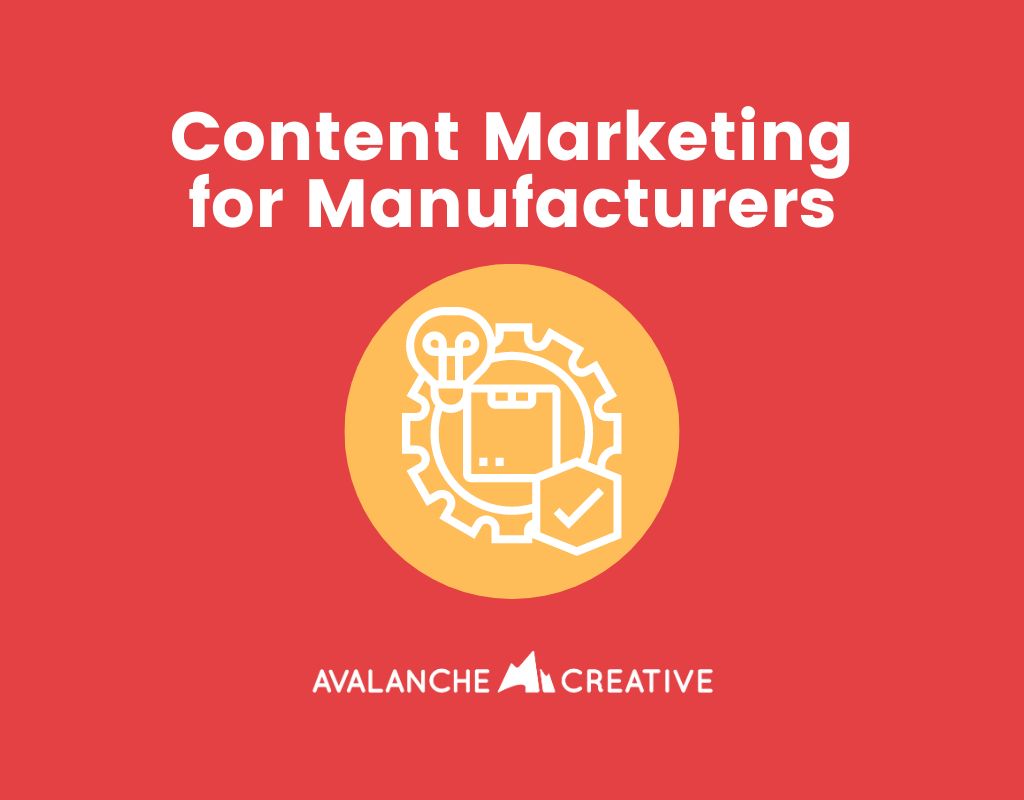An Example of How Manufacturing SEO Works
Suppose you have a potential customer who knows that they need promotional products, and they’d like to go a step beyond printed T-shirts. However, they aren’t sure where to start, so they pull out their phone and use Google to do a little research.
Here’s what the results might look like if they search for the phrase, “coffee mug manufacturer,” in Google:

These are among the first results they’ll find on page one when they search for people who can make coffee mugs. Many of the results on that page use the phrase “coffee mug manufacturer” directly in the content.
Think about who’s searching for this. They know they’d like to go a step above for their branding purposes, so they’re looking for a manufacturer that can make a good mug. Google understands why they’re looking for these services, so it offers them relevant results to help them solve that problem.
Why SEO for Manufacturing?
The reason is ultimately simple: No matter which type of products you produce, you need content as a manufacturer to help your customers understand your products and how they can use them.
People, including business decision-makers, trust search engines to help them find manufacturers like you when they need products. That’s also why it’s essential to understand how SEO works for manufacturers.
Manufacturing SEO Strategies
Creating an SEO strategy involves more than just adding a few keywords to your website. As a manufacturing SEO agency, we recommend using these guidelines to engage with your most valuable leads.
Using Search Empathy to Understand Your Customers
No matter their industry, we always tell clients to focus on their customers first. The pivotal step here is knowing and caring more about your customers than competing manufacturers.
Creating content to address your customers’ needs involves developing unique, engaging content that is helpful rather than being hyper-focused on selling. By tapping into how your customers think and what has them concerned, you can more easily turn them into leads.
Implementing On-Page, Off-Page, & Technical SEO
In general, SEO tactics fall into three overarching categories that you need to use. These include:
- On-page SEO: This subset of SEO tactics includes your website content. Search engines use signals like the keywords in your content to show searchers that you have relevant information about the products they need. From there, the visitor can see that you’ll be able to help them and can contact you.
- Off-page SEO: By contrast, this form of SEO refers to the content on other websites that helps your manufacturing website’s pages rank higher. One of the prime examples is having quality backlinks. A good volume of reputable backlinks validates your authority and tells searchers that you’re a manufacturing expert.
- Technical SEO: Most technical SEO measures are designed to help search engines easily crawl and scan your site, usually by fixing issues on its back end. Common measures include improving your site’s loading speed, security measures, and search indexability.
Creating Meta Titles and Descriptions
Also known as page titles, meta titles belong on every page you create. Similarly, your pages should have meta descriptions that tell the search engine—and in turn the searcher—about the content of your page. While they aren’t necessarily visible on your page, they can appear in search results. This type of organization guides users to and through your website.
Optimizing Page Load & Mobile Compatibility
Your website’s user experience (UX) sends a subtle message about what visitors can expect when they request a quote for your services. Fast load speeds are a great first impression.
Google and search engines incentivize faster load speeds, especially if they enhance user experience. They also prioritize mobile devices, so it’s important to always have a site that loads easily and can be used on mobile.
Designing a Usable Website
Having a website you can navigate is pivotal for making it easier for your users to convert. Make sure your website is modern and easy to navigate. Otherwise, they could end up leaving and asking your direct competitor for a quote instead.
Conducting Keyword Research
Using keyword research tools such as SEMrush and Google Search Console can help you find the relevant keywords your customers are using when they search for services like yours. For example, if you manufacture branded promotional products, these tools can help you target branded keywords, like “branded shirts near me.” From there, you can break the subject down into numerous subtopics relating to apparel decorating or substrate printing.
Writing Content
Creating content for your business customers and end users means knowing more about these groups—plus what they think and what they need. Finding quality content ideas will help you create pages and posts that your ideal customers will find helpful. This also includes folding keywords into the content that answers their questions and directly addresses their needs.
Building Links
Link building is the process of acquiring trustworthy links from other sites to your website, to illustrate authority. Search engines pay close attention to these links and will rank your website higher if you have relevant, trusted links directing to your site, such as local chambers of commerce or industry-related websites. The easiest way to do this is to establish relationships with these websites before asking them to link back to you.
Utilizing Social Media
Your brand’s social media presence may offer a platform to take your SEO efforts the extra mile. By directing people to links through your posts or on your social media profile, you can drive more people to visit your website pages and learn more about what you manufacture.
Targeting Local SEO
Having a comprehensive local SEO strategy helps you optimize your site for local audiences so they’re more like to ask you to produce their parts or products than the facility a few doors down. Reliable tactics for local SEO include creating a Google Business Profile account for your business, mentioning your service area on your website with specific pages for those areas, and making sure you’re listed in local chambers of commerce and trade directories.














